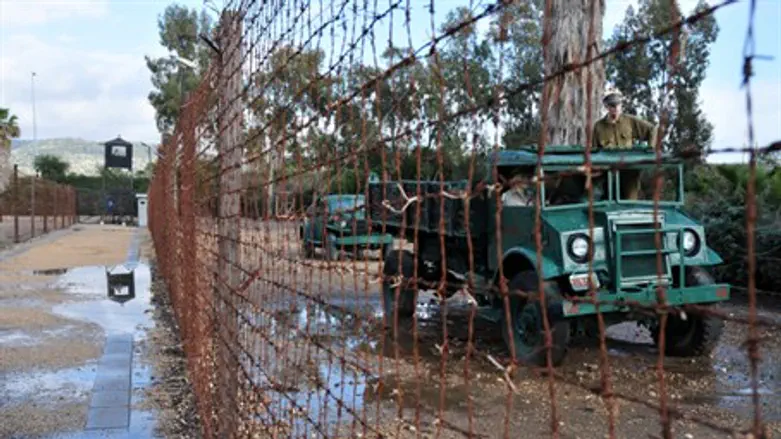
The Atlit detainee camp, located near the coastal town of Atlit just south of Haifa, was a detention camp established in the 1930s by the British to prevent Jewish refugees, mainly Holocaust survivors, from entering what was then Palestine.
Today, the camp is a museum which tells the story of those Ma’apilim (illegal Jewish immigrants). Arutz Sheva took a video tour of the museum.
“The Ma’apilim, by definition, are Jews who immigrated illegally during the British Mandate before the establishment of the State of Israel,” Sagi Pomerancblum, one of the museum’s guides, said. “The British imposed restrictions on immigration and gave certificates only to a certain number of Jews. Jews who didn’t receive certificates and still wanted to immigrate did so illegally, mostly on boats but also by land and air.”
The British brought the illegal immigrants to the Atlit camp and placed them there until they were released. When one visits the detention camp one can’t help but notice the striking similarities between the camp and the Nazi death camps in Europe, but as Pomerancblum said, the difference is that “this place is the revival. This place symbolizes the strength of Jewish aliyah to Israel, also the illegal one, but mostly the will and the desire to establish a state.
“We explain the similarities between the camps in the Holocaust and this camp, which also has fences and foreign soldiers and also has an unpleasant disinfection process,” he added. “However, it’s important to emphasize here that this camp is a camp which symbolizes life and revival. With all the similarities to the camps in Europe, similarities which are undeniable, this camp symbolizes something completely different.”
One of the more impressive exhibits at the detention camp turned museum is the Galina ship which was brought from Latvia.
“The ship, in essence, gives a feeling of what it was like to immigrate to Israel during the British Mandate,” said Pomerancblum. “There is an excellent interactive display of movies, puppets for the whole family, very enjoyable, which gives us, the visitors, the feeling of what it’s like to be a Ma’apil.”
He added that by bringing in the ship and turning it into an exhibit, “they wanted to give the other part of the immigration story. Not just the part of what it was like to live here in the camp but also what it was like to immigrate with all that it entails.”